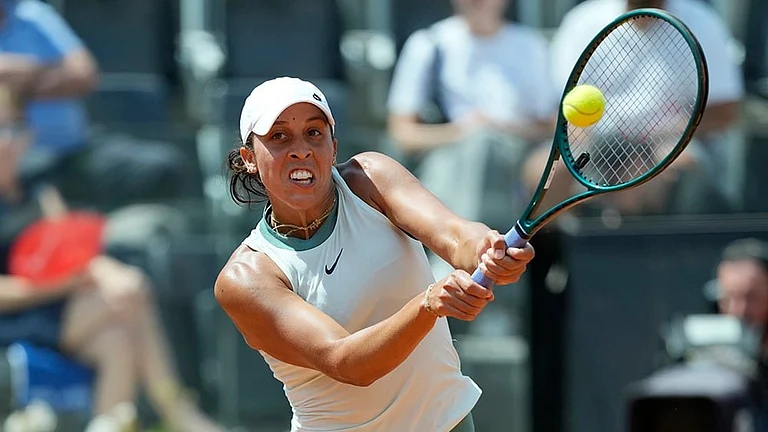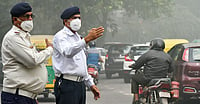“Gender equality is growing more distant. On the current track, UN Women puts it 300 years away," said Antonio Guterres, the Secretary-General of the UN in his address to the General Assembly ahead of International Women’s Day on 8 March this year. Guterres rather implicitly, ousted an array of regressive policies issued by different countries. The UN secretary general drew on the ban of women in public spaces, curtailment of sexual and reproductive rights, the plight of women in conflict-ridden areas, the morbid ramifications of the pandemic - specific to women’s education and employment, women’s underrepresentation in leadership positions and inaccessibility to digital spaces.
The rather charged statement followed The Gender Snapshot Report of 2022 published by the UN. The report acts as an SDG tracker, specific to the SDG 5 - Global Gender Equality - out of the 17 SDG goals established by the UN in 2015.
Diminished Outlook for Gender Equality
The report emphasizes on the need to amplify education and employment opportunities for women, and the disparities fuelled because of COVID-19. It also highlights how the backlash against women’s sexual and reproductive health and rights is another deterrent on the road to gender equality. "Our Gender Snapshot report shows that the COVID-19 pandemic and its aftermath, conflict and the backlash against women’s sexual and reproductive health and rights have diminished the outlook for gender equality across all 17 goals," Ginette Azcona and Antra Bhatt, research and data specialists involved in the curation of the report, told Outlook.
Violence against women has aggravated with the high global health, climate and humanitarian crises in place, especially among the vulnerable in conflict ridden areas. War further worsens food insecurity while the rate of crimes against women and children increases multifold.
This year’s SDG 5 tracker also reveals a regression in women’s economic empowerment. Reduced women’s representation in positions of power and decision-making remains a major contributing factor to the disparity in their economic empowerment. Additionally, the report underlines how violence against women is not restricted to physical, offline spaces anymore. Online violence too, has notably increased during the pandemic. As the deadline of 2030 nears, the UN’s report aims to prove catalytic in accelerating focused efforts in the right direction. The targets set to achieve, and their analysis based on the latest report are outlined as follows:
End all forms of discrimination against all women and girls everywhere - However, gaps in constitutional provision for gender equality persist. Lack of quotas and guarantees for equal legal rights might take another 286 years to achieve.
Eliminate all forms of violence against all women and girls in the public and private spheres, including trafficking and sexual and other types of exploitation - Considering the present state, ubiquitous presence of laws to address and prevent violence against women can take another 21 years. Cases of honour killing, sexual and physical violence in a relationship, domestic violence at homes, witnessed a surge during the pandemic and need to be acknowledged and addressed more adeptly.
Eliminate all harmful practices, such as child, early and forced marriage and female genital mutilation - 1 in 4 women have undergone FGM in Sub-Saharan Africa. And although progress is slow, noteworthy steps have been taken by 4,475 communities to outlaw the practice, recording a steady increase by 48 per cent since 2020.
Recognize and value unpaid care and domestic work through the provision of public services, infrastructure and social protection policies and the promotion of shared responsibility within the household and the family as nationally appropriate - Compared to men, women shouldered a larger share of unpaid care work during the pandemic that went unnoticed because of a lack of documentation. Since women are assumed to oversee the domestic space, it impedes their ability to join the labour force in the same way as men. The recently released UN report - “The Paths To Equal” highlights a stagnating figure of 61.8 per cent women’s share in the labour force, as compared to more than 90 per cent of prime working-aged men.
Ensure women’s full and effective participation and equal opportunities for leadership at all levels of decision-making in political, economic and public life - As per records, in 2022, women held only 26.4 per cent of parliamentary seats globally. While representation was below 10 per cent in 23 countries. It would take about 39 years to bridge the colossal gap. Women clearly are deprived of an equal right and say in decision and policy making involving them.
Ensure universal access to sexual and reproductive health and reproductive rights as agreed in accordance with the Programe of Action of the International Conference on Population and Development and the Beijing Platform for Action and the outcome documents of their review conferences.
Undertake reforms to give women equal rights to economic resources, as well as access to ownership and control over land and other forms of property, financial services, inheritance and natural resources, in accordance with national laws - According to the 2019-21 data, only 4 out of 52 countries have legal frameworks that guarantee women’s equal rights to land ownership and control.
Enhance the use of enabling technology, in particular information and communications technology, to promote the empowerment of women - women are less likely to own a mobile phone than men, in 52 out of 80 countries and areas.
Adopt and strengthen sound policies and enforceable legislation for the promotion of gender equality and the empowerment of all women and girls at all levels - Progress has been noted in terms of Gender Responsive Budgets, with 59 per cent of the countries allocating certain features to track the same.
Gender inequalities intersect and come to the front when measuring the remaining 16 SDGs too. "The achievement of SDG 5 is closely linked with progress on all of the other SDGs," said the UN research and data specialists Ginette Azcona and Antra Bhatt.
Poverty
The SDG tracker envisaged around 383 million women and girls to live in extreme poverty compared to 368 million men and boys, by the end of 2022 - the majority share to remain from Sub-Saharan Africa and Central and Southern Asia. If the current trends continue, by 2030, more women and girls are anticipated to live in extreme poverty in Sub-Saharan Africa than they do today. "Inadequate access to decent work and social protection perpetuates the poverty cycle," Ginette and Antra added.
Since poverty often endangers other essential services like clean drinking water and fuel, such deprivations propel other inequalities, as women spend more time on unpaid care and domestic work.
Climate Change
Moderate or severe food insecurity among adult women rose from 27.5 per cent in 2019 to 31.9 per cent in 2021. This further increases their risk of developing anemia. In 2019, 571 million women of reproductive age were anemic. Climate shocks coupled with the economic depravity from COVID-19, and conflicts and wars have also contributed to the major food security crisis. The UN cites nearly one in every three women to fall victim to food insecurity, globally.
Health
The COVID-19 pandemic has disrupted health services and strained medical supply chains, financial and human resources. This has inadvertently affected women’s sexual and reproductive health. Countries have gone through drastic declines in maternal health care, including antenatal services. Adolescent pregnancies were also on the rise among girls with no or little primary education, and the poor in developing countries. Legal restrictions, including the criminalization of abortion, continue to impede access to safe, sexual and reproductive health care. Decline in both, physical and mental health have been registered. Women's life expectancy has been shortened by 1.6 years in 2021 compared to 2019.
Education
According to Ginette and Antra, education has a sizeable impact on women and girls’ ability to pursue a career and break the cycle of poverty. And every subsequent year of schooling can boost their income by 20 per cent. Globally, transformative gains in girls’ education have unfolded in recent decades. Girls’ learning outcomes have, on average, caught up to those of boys and in some cases surpassed them. However, the trajectory has not been equal between the urban and the rural. When asked in context specific to India, they said, "In India, 30.7 per cent of women aged 20-29 have completed upper secondary school. However, only 4.7 per cent of women and girls from poorest rural households have secured an upper secondary degree vs 69.8 per cent of the richest urban girls. This highlights the lopsided progress being made as high-quality education for the marginalized groups of women and girls remains out of reach."
UN Women’s analysis of a sample of 29 countries with recent data on upper secondary school completion confirms the existence of inequality in access to education, with girls from rural poor households among the most deprived.
Faster poverty reduction, better maternal health, lower child mortality, greater HIV prevention and reduced violence against women, all can be achieved by educating women and girls. Despite the knowledge, more than half of nearly 130 million girls are not enrolled in formal education worldwide. In Afghanistan, girls are no longer allowed to attend secondary school. Moreover, girls with disabilities and those residing in crisis affected areas are worse affected. Additionally, girls, across countries are systematically steered away from science and math careers in lieu of the stereotype manufactured around ‘men’ and ‘women’ jobs. This results in a mammoth imbalance with women making up a mere 19.9 per cent of science and engineering professionals.
Clean Water and Sanitation
According to the UN research and data specialists, the unavailability of safe water, sanitation and hygiene claims the lives of more than 800,000 women and girls every year. 44 million pregnant women have sanitation-related hookworm, which causes maternal anemia and leads to preterm births. Subsequently, in the face of a paucity of clean water and sanitation, women and girls end up walking long distances and expending a copious amount of time and effort in pursuing this activity.
In India, in a quarter of rural households with no water on premises, women and girls devote more than 50 minutes per day to the exercise of collecting water. Compared to 4 minutes per day for men.
Energy
Continued supply of electricity can reduce women’s time spent on unpaid domestic work and in turn improve their decision-making ability, financial autonomy, reproductive freedom and social participation. And clean cooking technologies will help them escape chronic obstructive pulmonary diseases caused by fuelwood.
Employment and Economic Growth
Women have been predominantly employed in informal sectors exposing them to greater vulnerabilities. Unequal distribution of unpaid care work and limited access to maternity benefits, childcare widens an already existing gender pay gap. The pandemic has further heightened job insecurity. So much so, women have not recovered lost jobs and income.
Industry, Innovation and Infrastructure
Women and girls remain underrepresented in industries, academia and the broader technology sector. Women hold only 2 in every 10 science, engineering and information and communication technology ventures. Their participation even in government, research and resource management remains negligible. Women make up only 16.5 per cent of inventors listed on international patent applications globally, Ginette and Antra confirm.
Reduced Inequalities
By the end of 2021, some 44 million women and girls, encompassing refugees, asylum seekers and those displaced in war, accounted for IDP - Internally Displaced People. The migrant women are overrepresented in the domestic workspace, rendering themselves more vulnerable to violence, trafficking and sexual abuse. Displacement also often results in loss of property, assets and livelihoods, coupled with insignificant access to health care. Although, the gaps tend to be smaller in higher human development countries, it is not always the case, as suggested by Ginette and Antra. The recently released Gender Parity Index by the UN ratifies that higher GDP does not always translate to higher gender equality or women’s empowerment.
Sustainable Cities and Communities
UN Women’s rapid gender assessments in 13 countries revealed 49 per cent of women in urban areas felt less safe walking alone at night since the pandemic. Simultaneously, women and girls, in slum and slum-like settings, are bestowed with inadequate housing, water and sanitation in addition to a decrepit health care system and incompetent transport services. Considering their economic and social handicap, a decent job opportunity is a far-flung dream.
Climate Action
Responsible consumption and production, climate action, life below water and on land, have visible effects everywhere. Women play an instrumental role in climate change adaptation and mitigation despite many obstacles, and hence, must be engaged in devising responsible solutions.
Peace, Justice and Strong Institutions
Women human rights defenders working on land, environmental and indigenous rights, LGBTQI rights and women’s rights face sexual violence and harassment, often inflicted to intimidate and drive them out of public life.
Partnerships for the Goals
Women, globally, lost an estimate of $800 billion in income in 2020 due to the pandemic. Improved international cooperation is pertinent to combat the global crises. Funds need to be better directed to ameliorate the crises faced by women and girls.
Context Specific to India
UN research and data specialists, Ginette and Antra shed light on the major impediments facing gender equality, in the context of India.
While only 12 of 18 indicators and sub-indicators for SDG - needed to monitor SDG 5 - have data available for India, 5 are far or very far from target, 4 are moderate distance to target while only 3 are target met or almost met. Following are the highlights from the conversation:
- They noted that in India, 44 per cent of members of local deliberative bodies are women, and the figure has been attributed to deliberate policies like gender quotas.
- According to the UNDP and UN Women, the Ministry of Finance-led gender budgeting in Budget Circulars, Expenditure Budgets, and the Outcome Budget is exemplary.
However, progress is slow in other areas and needs to be followed through. These include - having legal frameworks in place to promote, enforce and monitor equality and non‑discrimination based on sex and overarching legal frameworks governing public life, employment and economic benefits. Similarly, gaps are also seen in the representation of women in national parliaments, women in managerial positions and in the time spent on unpaid care and domestic work.
- One of the biggest impediments, however, persists to be the presence of discriminatory social norms which relegate women to a traditional role of the primary caregiver in a household. Based on the 2019 Time Use Survey from India, women do 8 times more unpaid care and domestic work as compared to men. Concurrently, the participation rate of women in the labour force for prime aged individuals (25-54 years) is 36.3 per cent, juxtaposed to the 96.5 per cent for men. While these rates remain stable for men irrespective of their marital status and family responsibilities, for women with young children at home these rates drop further. Thereafter, countries with higher expenditure (as a percentage GDP) on children tend to have lower labour market participation gaps. In contrast, countries with little or no expenditure - such as India - have the highest gaps. Gender equality will remain a distant dream for India unless policies to address these issues are put in place.
The Gender Snapshot 2022 report urges and directs cooperation, partnerships and investments to pour in, since no country has achieved full gender parity across key dimensions of human development. Although progress has been made over the last few years, as more girls attend school, more women serve in parliament and positions of leadership, rate of child or early marriage witnesses a decline, and laws to advance gender equality are set in place, the pandemic reversed a lot of these developments. An amalgamation of elevated poverty rate, inflated food and commodity prices, an unprecedented climate emergency and shrinking sexual and reproductive rights, face women and girls with greater risks.
"Stronger international cooperation, especially around financing for gender equality, is needed to combat the multiple and interlinked global crises that put their lives and wellbeing at risk, but funding remains erratic and insufficient. Let’s raise our voices to change this too! Women deserve better," Ginette and Antra conclude.


























